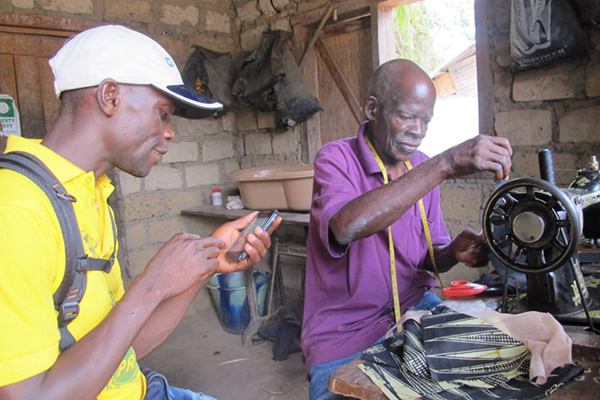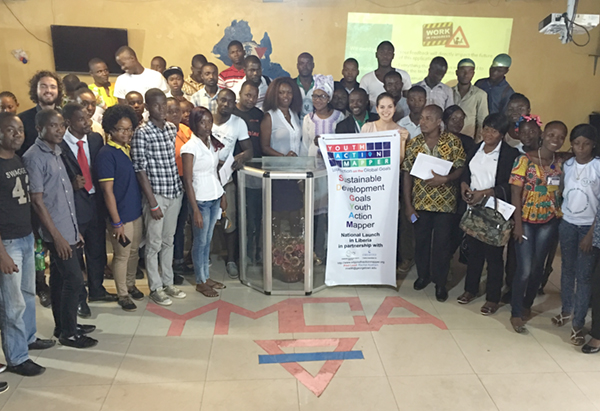Monrovia, LiberiaFor the first time in the memory of my generation, youth have been actively included in the implementation of the United Nations’ agenda for world prosperity. Through networks like Sustainable Development Solutions Network-Youth, people in that age group now interface with global leaders.

But these connections rely on resources, access and knowledge about the global development agenda—things many young people lack.
Por ejemplo, in Liberia—where I surveyed young people about the Global Goals—youth volunteer their time to enhance their communities and work and learn for peace, but they do not reference their work in terms of lofty global frameworks. Less than 5 percent of the nearly 200 young Liberians I met were aware of the UN’s Objetivos de Desarrollo Sostenible (SDGs or Global Goals) or Liberia’s own Agenda for Transformation, and fewer were aware that those frameworks included youth.
Mobilizing young people to act on their critical position requires a new forum that connects them to the Global Goals and puts them in the lead. If not, countries risk further excluding youth and falling short of the SDGs.
Through increasingly ubiquitous mobile infrastructure, governments and global development organizations are informing their constituents about the Global Goals. They are mobilizing youth action with tools like Creative Associates International’s SDG Youth Action Mapper—a mobile app and online mapping tool allowing users to map, make, and measure progress towards the Global Goals.
The SDG Youth Action Mapper
Interviewing youth organizations, government ministries and UN country offices in Monrovia, I investigated how the SDG Youth Action Mapper could support both young people in their endeavors and the communities in which they live.

The app allows young people to find action opportunities on the SDGs around them, from supporting education to enhancing sustainable consumption, and map their own opportunities for others to see. It collects data on the details of projects, like the names and locations of organizations working on Global Goal-relevant projects, and how such work contributes to the SDGs.
During trainings at the University of Liberia, the YMCA and the Youth Crime Watch, I gathered feedback on functionalities of the SDG Youth Action Mapper app from people and community leaders ages 14 a 34. Their responses highlighted how access to leaders and skill-building opportunities would make the app stand out in a sea of Facebooks and Instagrams, and mobilize them to act to improve their communities.
Keeping decision-makers accountable
Information about the SDGs is not widely available in Liberia. Sin embargo, new organizations like the Sustainable Development Network-Liberia are cropping up to close the knowledge gap, and the SDG Youth Action Mapper could accelerate that progress.
In a climate where development and youth-focused projects come and go, SDG initiatives must create a clear interface between youth and decision-makers to gain legitimacy. Initiatives like the SDG Youth Action Mapper have the potential to become tools for accountability by increasing the visibility of youth initiatives, and could mobilize “social networks” around SDG action as users share opportunities and communicate with each other.
Young people already devise entrepreneurial community-based solutions from health to the environment, and they want these solutions to affect great change. In order for their ideas to be acted upon and scaled up, robust data about their activities must be collected and escalated to decision-makers.
As governments determine which SDGs are most relevant to them, youth could become data collectors, and gather information on country-specific indicators. To make that happen, relevant government agencies like the Liberian Institute for Statistics and Geo-Information Services and the Liberian Ministry of Youth & Sports should be part of the conversation.
A skill-builder for youth
The SDGs offer countless possibilities for young people, whether it be gaining leadership experience or technical skills, and those benefits must be emphasized by the UN, gobiernos, and international organizations to mobilize youth to take and lead action toward achieving the Global Goals.
In a globally competitive job market with limited educational opportunities, youth need to know that their involvement in SDG action, through tools like the SDG Youth Action Mapper, will benefit both themselves and their communities. Participation in projects that allow young people to gain a skillset, like Python coding or project management, could give young people credentials for employment.
Initiatives like the Youth Action Mapper can show the public the astounding work of young people everywhere, and the broader inclusion of youth in SDG implementation—advantageous to every country—will come from this whole-of-society approach that gives young people the tools and trust to make their communities, and the world, a better place.
Rachel Azafrani is a student at the Walsh School of Foreign Service at Georgetown University. With support from the School of Foreign Service, Georgetown’s Office of Fellowships and Research, the Social Innovation and Public Service Fund and the Georgetown International Relations Association, Cª, she conducted a needs assessment, partnership building and alpha roll-out of Creative’s SDG Youth Action Mapper in Liberia.